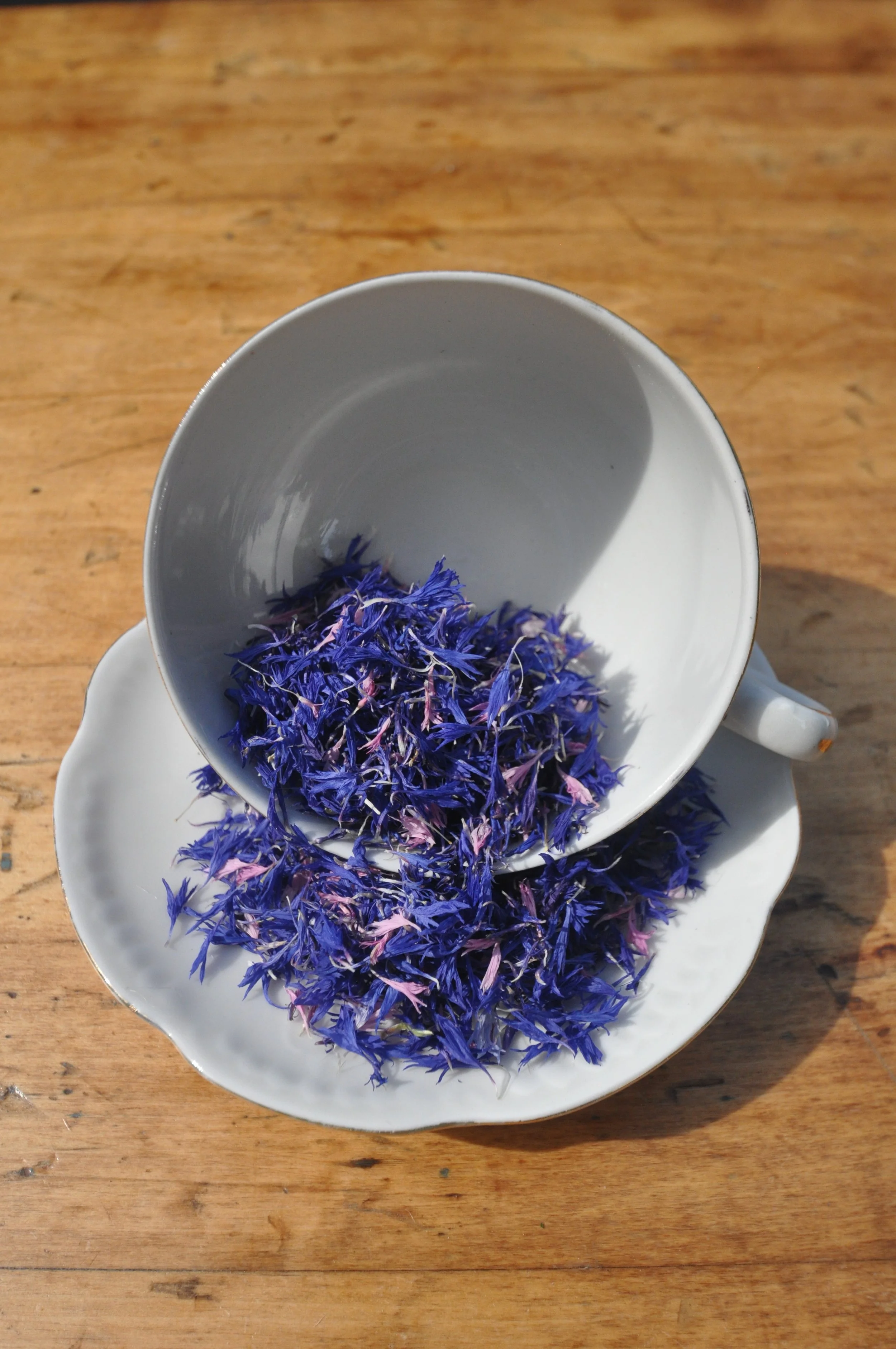Calendula
Calendula (Calendula officinalis), commonly known as pot marigold, is a bright, cheerful flower native to southern Europe but cultivated widely around the world for centuries. Its name is derived from the Latin calendae, meaning “little calendar” or “first day of the month,” because it was said to bloom nearly every month in temperate climates. Calendula has a long history of use in ancient Greek, Roman, and Indian herbal traditions. It is prized not only for its vivid orange and yellow blossoms but also for its symbolic ties to the sun and healing.
Historically, calendula has been used for a wide range of medicinal and culinary purposes. Its petals are rich in antioxidants and have anti-inflammatory, antifungal, and antibacterial properties, making calendula a popular ingredient in natural skin care products such as salves, balms, and creams. Calendula is also used to support digestive health, reduce menstrual cramps, and aid in wound healing. It’s also a favorite in herbal teas for its gentle soothing properties and can be used as a natural dye or garnish in cooking.
When brewed into tea, calendula offers a mild, slightly sweet and floral flavor with hints of earthiness and a touch of bitterness. The taste is not overpowering and blends well with other herbs like chamomile, mint, or lemon balm. Calendula tea is often consumed to soothe sore throats, ease gastrointestinal discomfort, or support immune function during illness. Its warm golden color and subtle flavor make it a comforting and restorative drink, particularly appreciated in herbal wellness routines.
-
Chamomile
Lemon Balm
Orange Balm
Peppermint
-
Anti-microbial
Healing
Reproductive Health
-
Steep 1-3 teaspoons flowers in 8oz nearly boiling water for 5-10 minutes.
These statements have not been evaluated by the Food and Drug Administration. This product is not intended to diagnose, treat, cure, or prevent any disease. Consult your healthcare provider prior to use if you are pregnant, nursing, taking any medication, or have a medical condition.




Alehoof tea is a soothing, caffeine-free herbal infusion crafted from organic dried leaves of the alehoof plant. Known for its gentle, earthy flavor with subtle herbal undertones, alehoof has long been valued for its digestive and immune-supporting properties. Traditionally used to calm the digestive system and promote overall wellness, this tea offers a comforting ritual for daily self-care. Its mild taste and natural benefits make alehoof a wonderful addition to your herbal tea collection.